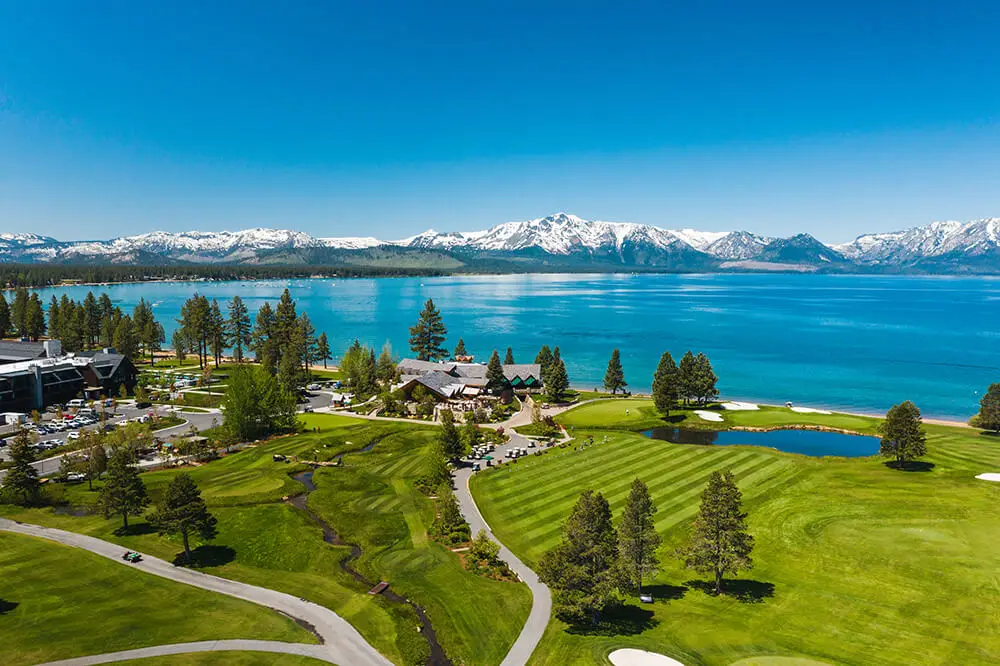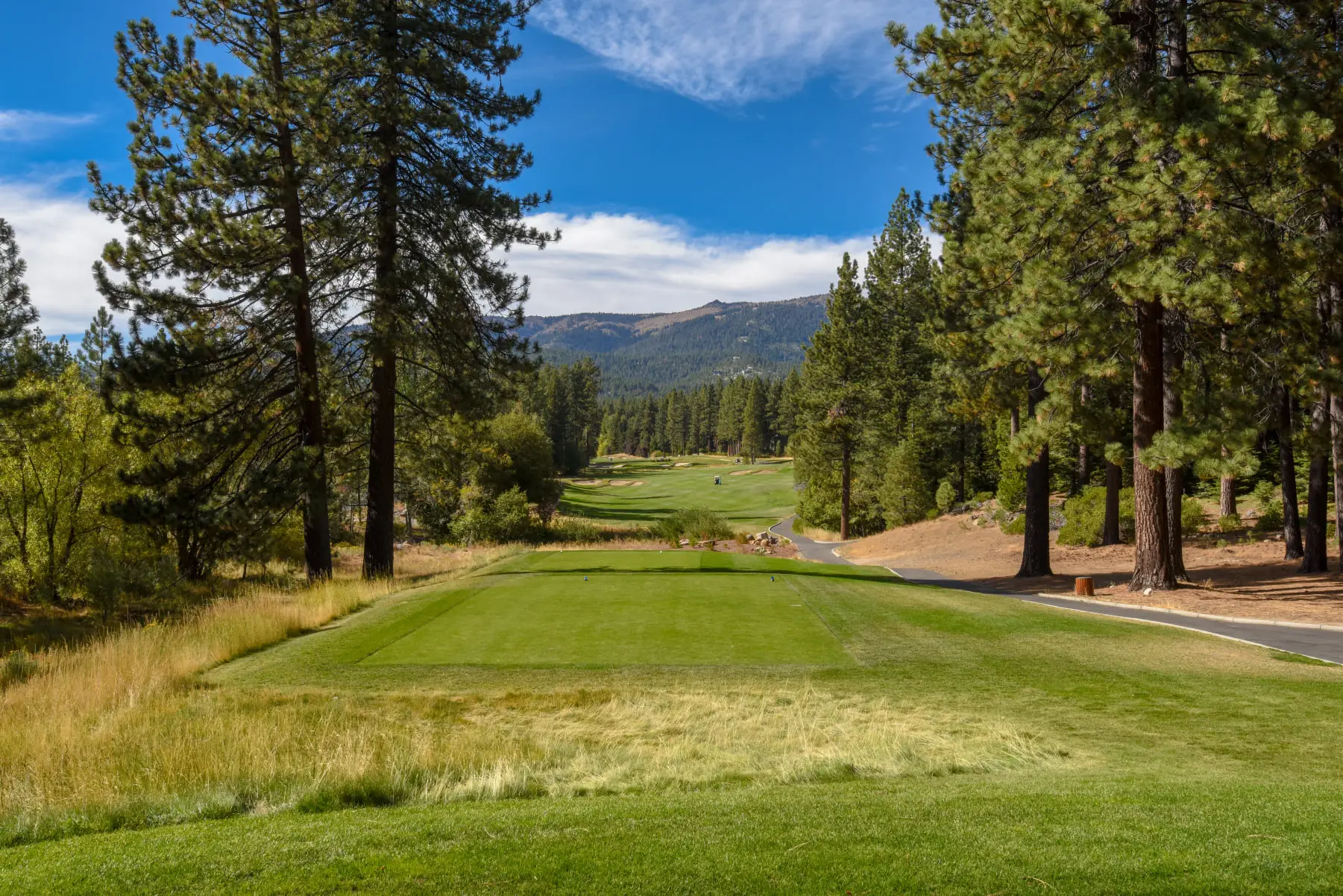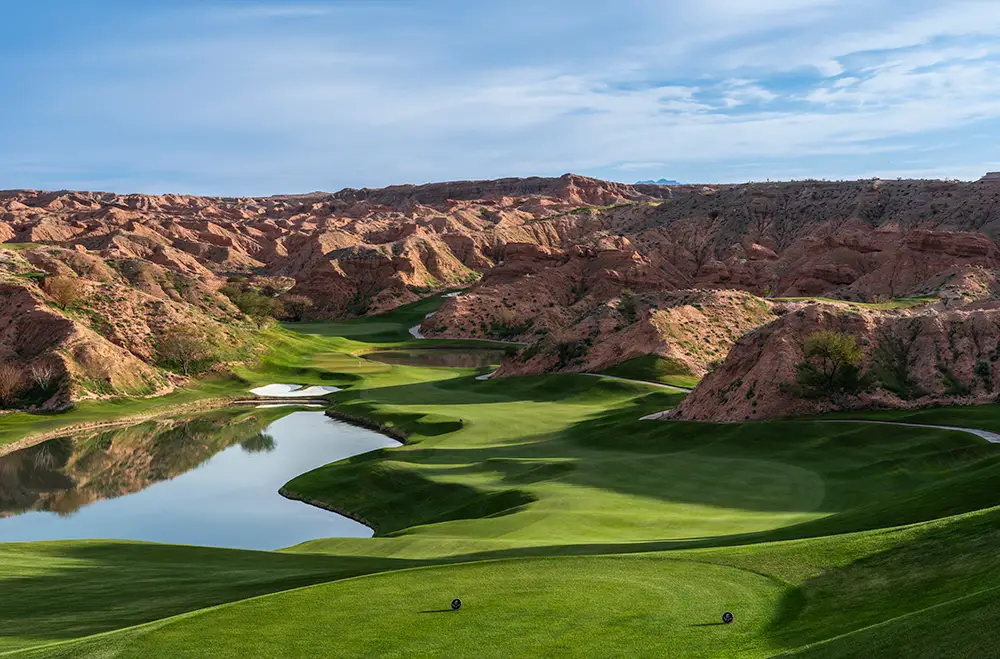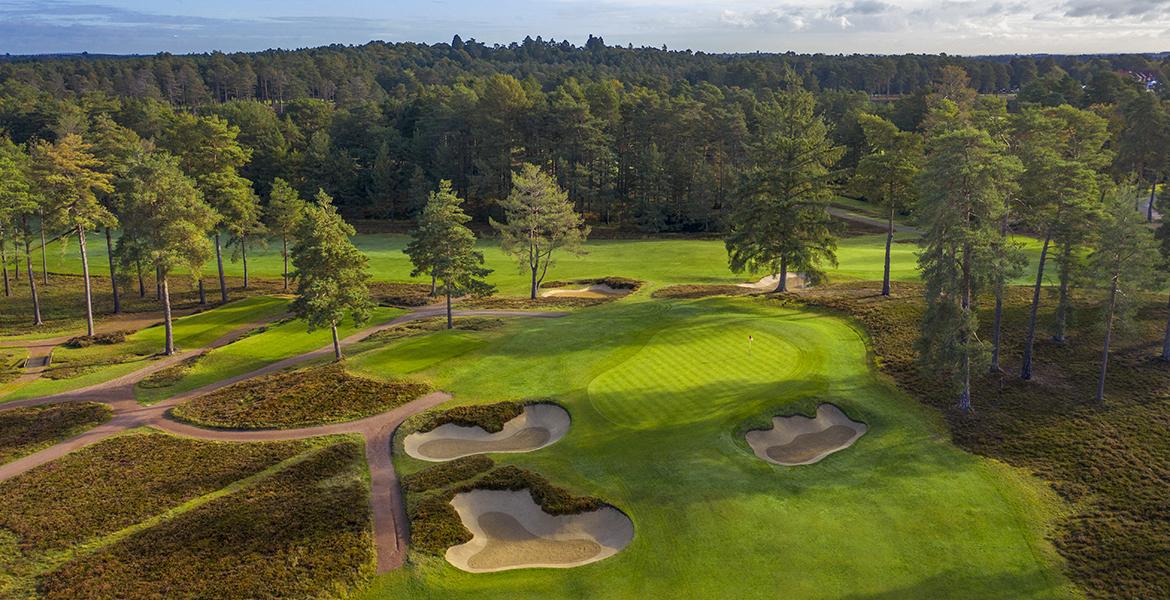Unless you hail from The Silver State, chances are your knowledge of Nevada starts and ends with Las Vegas. Like a few states out west, a lot of Nevada’s population is packed into one or two sizeable urban areas while the rest, all 110,000 square miles of it, is wild and desolate country. Fly into the city’s Harry Reid International Airport (LAS) on a clear day and you’ll see an awful lot of brown, red, gray, and orange desert/rocks before the sprawling suburbs and famous themed casinos loom into view.
For this article, though, I’m going to assume you’re already familiar with Sin City’s best public courses. This time you’re curious to see what’s on offer in the vast hinterland outside the always-exhilarating, neon-lit, “Entertainment Capital of the World.” We set a strict “half-hour plus from the Strip” limit for this which means a lot of excellent courses like Shadow Creek, Cascata, The Revere, Rio Secco, Reflection Bay, Boulder Creek, and the three great layouts at the Las Vegas Paiute Golf Resort miss out, some by a minute or two.

There are other public courses dotted around the state but, for the most part, if you’re looking to play golf in Nevada somewhere other than Las Vegas and its satellite cities, you’re heading either to Mesquite near the state’s eastern borders with Arizona and Utah or the Reno/Carson City/Lake Tahoe area in the far west neighboring California.
Mesquite is within fairly easy reach of LAS, while RNO (Reno-Tahoe International Airport) is obviously convenient for courses nearby. Wherever you fly to, though, you’ll probably face a few hours behind the wheel of a rental car before stopping to explore one of the genuinely remarkable National/State Parks or throw some cash into ubiquitous slot machines.
Start in Reno and your first stop might be Edgewood Tahoe, designed by George Fazio and opened in 1968, 60 miles south of the “Biggest Small City in the World.” Part lake shore, part conifer forest, this gorgeous course sits 6,000 feet above sea level and hosts the famous American Century Championship which, in July, always features a strong list of celebrities including a roster of NBA, NFL, MLB, and NHL hall-of-famers, Pro-Bowlers, and All-Stars.
It’s just 19 miles east, but 35 minutes on a circuitous route, to Genoa Lakes, where in 1993 the first of the club’s two courses opened. Co-designed by Peter Jacobsen and John Harbottle III, the Lakes Course is generally considered the better of the two, though the Ranch Course—five years younger and a collaboration between Harbottle and Johnny Miller—is probably the choice of those who prefer courses without quite so much water. Whichever you play, though, the views of the Sierra Nevada foothills, at times less than a mile to the west, can be overwhelming.

Similarly sensational was the job Kyle Phillips did in resuscitating Robert Trent Jones Sr.’s 40-year-old Championship Course at Incline Village, about 25 miles north of Genoa Lakes as the crow flies. Jones’s original, while hugely popular, was ready for the overhaul that began in 2003, and which cost a little under $5 million. Dollar for dollar, the transformation Phillips accomplished was on a par with his well-documented, $13 million project at California Golf Club in San Francisco and saw the course rise dramatically in several rankings. Robert Trent Jones Jr.’s par-58 Mountain Course is a pleasant diversion.
It’s 75 miles west and north (though only 20 for the crow) to the southernmost of Reno’s suburbs and the wonderful Wolf Run, which has a distinguished story despite being just 27 years old. It was laid out on land belonging to the University of Nevada-Reno and designed by former Olympic Club superintendent John Fleming whose father, Jack, was a superintendent himself and later designed several notable courses in California having learned the craft from Alister MacKenzie. Despite being bordered on all sides by suburbia, Wolf Run is delightfully free of interference and plays over naturally rugged ground with terrific views of the mountains.
The casinos in Mesquite—550 miles southeast of Reno and 80 northeast of Las Vegas—may be smaller than their Las Vegas counterparts and will never boast the same glitz and notoriety, but like most casinos, they come with golf. The seven courses here enjoy remarkable settings among limestone/sandstone canyons, ravines, ridges, and rock formations on the northeastern edge of the Mojave Desert, and all of them are open to the public.

The fantasy calendar Wolf Creek, opened in 2000 and designed by amateur architects Dennis and John Rider (with an early routing assist from Jim Engh), is the city’s best-known layout. There are those who think it artificial with its lush and extravagantly maintained ribbons of fairway, bright-white bunkers, and manmade water hazards/penalty areas. But most can put their sustainability/sense-of-place blinkers on for long enough to enjoy a never-to-be-forgotten round.
The golf is similarly compelling at the Gary Panks-designed Conestoga, featuring numerous attractive and charismatic holes that wind through canyons inside the Del Webb active adult community of Sun City Mesquite.
Coyote Springs, considered Mesquite’s eighth course despite being 55 miles to the west, is a Jack Nicklaus design that is part of a 43,000-acre property once earmarked for a master-planned community, but which has fallen foul of recession and various legal/environmental barriers. Originally known as The Chase, the course opened in 2008 and is surrounded by a rugged and pristine expanse of mountains and desert. Full of exciting and imaginative holes, it’s worthy of a trip no matter how isolated.
Seven recommended courses/destinations in a state the size of Nevada really doesn’t seem like many (including Las Vegas’s best public courses would certainly double the number of endorsements here), but their quality is the silver lining.







